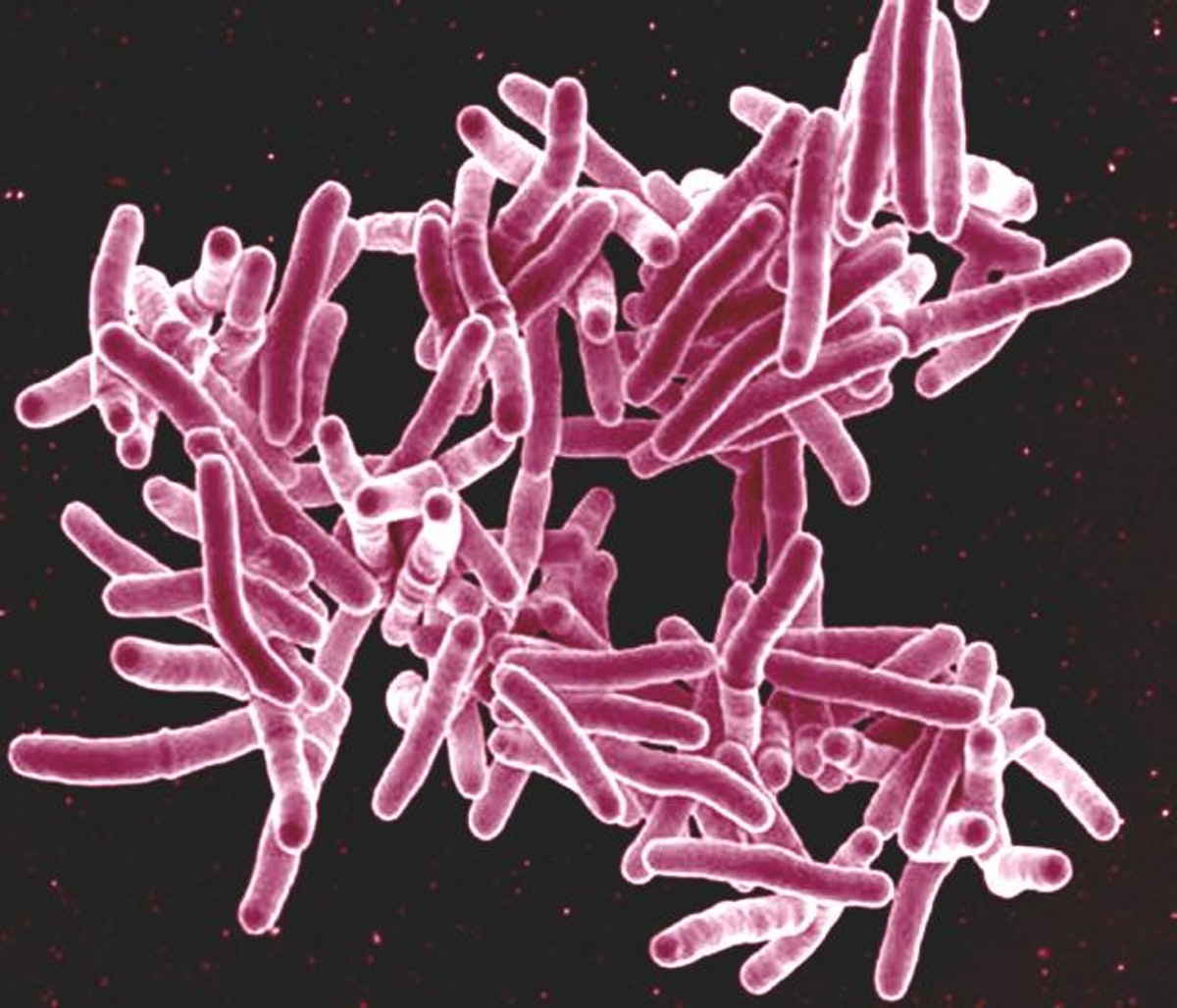
Microscope image of a Mycobacterium, a member of the family that causes tuberculosis. Photo: NIAID/Wikimedia Commons.
I felt fear for the first time during this pandemic. I was speaking to a man who was on maximum oxygen, one step away from being on a ventilator. I told him that if he went on a ventilator, he would likely be on it for weeks, with an uncertain outcome. Did he want a ventilator if it came to that? He seemed visibly anxious. I held his hand and felt his fear. At that time, I should have acknowledged it. I should have reassured him by saying that caring for critically ill patients was our specialty. That he was receiving the best care anyone could receive. But I didn’t. I remained frozen at that moment because I was scared. What would I do if I were in his situation? How terrifying would it be to be in an ugly ICU room by myself?
I just finished my first ‘real’ shift in the COVID-19 intensive care unit. As an intensivist, I had taken care of several patients with COVID-19 before this. Still, we had escaped the first big wave of infections. A few days ago, we had only five patients in the intensive care unit with COVID-19 – our threshold for closing the ICU to make it a COVID-19 unit. Now, 12 out of our 14 ICU beds were occupied. Then, there were 50 patients with COVID-19 on the regular nursing floors; now, 70.
We have all heard that the scale of this pandemic is unprecedented. COVID-19 has overwhelmed healthcare systems, and 1.5 million people have died from COVID-19. More will die in the coming months. The scientific community’s response to this pandemic has been impressive. In less than a year, we have had hundreds of clinical trials, thousands of research papers, at least one effective drug, and several new drugs in trials. We have managed to produce not one but three vaccines in record time.
Let’s put things in context. A little over 1.4 million people died of tuberculosis (TB) last year. TB has killed about the same number of people every year for decades. It has never received the same attention that COVID-19 has. In the past fifty years, we have had only three new TB drugs. The drugs that we do have often cause a range of side-effects, from dyeing the skin orange to deafness and kidney failure. Some TB vaccines are in trials, but none has been successful.
In another life, in Mumbai, I sat across the table from a patient with extremely drug-resistant tuberculosis, a form of TB with little or no effective treatment. I had the privilege of an N95 mask and a fan behind me to protect me from TB aerosols. I was afraid for my life but quickly forgot that fear when I saw helpless desperation in the eyes of the man who knew I had little to offer him. Who saw that my toxic cocktail of medications would not be enough to save him. That TB would eat through his body slowly, him coughing out his life, little by little. He would eventually go deaf from the daily intramuscular injections he received.
While COVID-19 is dramatic in overwhelming medical systems quickly, TB kills slowly, destroying entire families over time. Victims of TB are forgotten because most do not have money, power, or a voice.
The tuberculosis death rate has been gradually dropping every year, but this pandemic threatens to undo that progress. India, one of the countries worst affected by TB, has seen a drop in TB diagnoses by up to 80% this year. This drop is concerning because it means that patients are not going to healthcare facilities to get diagnosed. TB treatment involves multiple drugs that the patient needs to adhere to for several months, if not years. COVID-19 lockdown restrictions made it harder for patients on therapy to get their medications. Treatment interruptions can cause more drug-resistant strains, prolonging treatment, and threatening treatment failure.
It is essential to be aggressive about managing COVID-19, but measures to control this pandemic should not come at the cost of another. What the entire world has experienced now is experienced by just as many in the developing world, in different ways through different diseases, every year. If we genuinely believe that all lives have equal value, we need to demand the same urgency in treating deadly diseases such as TB. As we fear COVID-19’s devastation all around us, let us remember that for many, living with this danger is a way of life. We need to rip that scab off our wounds and feel the pain to listen and, hopefully, understand.
Dr Varun U. Shetty is an intensivist working in Erie, Pennsylvania. He grew up in Mumbai and worked with Doctors Without Borders before moving to the US.

